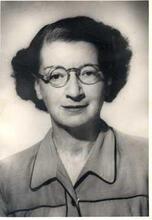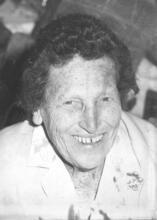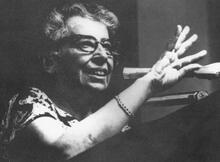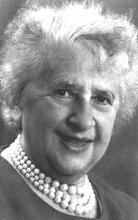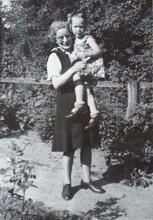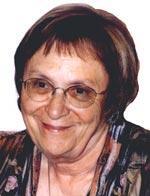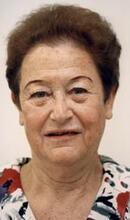Gertrud Kornfeld
Born in Prague to a middle-class family, Gertrud Kornfeld completed her Ph.D in physical chemistry at the German University in Prague in 1915. In 1918 she moved to Berlin, where she was appointed assistant to the famous physical chemist Max Bodenstein. In 1928 Kornfeld became the first woman scientist to receive an academic appointment at the University of Berlin when she was appointed lecturer in physical chemistry. The implementation of the Nuremberg Laws cut her career in Germany short; Kornfeld subsequently immigrated to Great Britain, but as a woman she was unable to obtain a position of equally high esteem. In 1937, the American Federation of University Women helped her immigrate to the United States, where she did research for the Kodak Company until her death in 1955.
Article
Gertrud Kornfeld’s life epitomizes the successes and frustrations of women scientists in academia in the first half of the twentieth century. She was the first woman scientist to receive an academic appointment in chemistry at the University of Berlin when she obtained the “venia legendi” (authorization to teach at a university) to lecture in physical chemistry at the university (Privatdozent, or lecturer). Indeed, she was the first woman lecturer in chemistry at any university in Germany.
The daughter of an industrial merchant in Bohemia, Kornfeld was born in Prague on July 25, 1891. Her family belonged to the German-speaking middle-class Jewish community in the city. She received an excellent education, first at a German school for girls, then at a gymnasium for boys, where she passed the Austrian Abitur, the prerequisite for university entry. From 1910 until 1915 she studied chemistry, physical chemistry and physics at the German University in Prague. (The famous ancient Charles University in Prague was divided into two—one Czech and one German—at the end of the nineteenth century.) In 1915 she completed her Ph.D. thesis at the German University and was appointed assistant to her mentor Viktor Rothmund (1870–1927). Beginning in World War I it became possible for women scientists to receive academic positions as assistants at several universities, similar to the one Gertrud Kornfeld held at the German University in Prague from 1915 until 1918.
Because Kornfeld and her family were German-speaking, she left Prague and moved to Germany after the establishment of the Czech Republic in 1918. As a former assistant of Viktor Rothmund, she soon received a position as assistant to the famous Max Bodenstein (1871–1942) at the Technical College in Hannover, where she remained from 1919 until 1923. When Max Bodenstein was appointed professor at the University of Berlin in 1923, Kornfeld followed him as an assistant at the university’s Institute for Physical Chemistry. In 1928 she became a lecturer in physical chemistry at the University of Berlin—the first woman in this field. She also retained her position as assistant. Gertrud Kornfeld liked to teach and served as advisor to several doctoral candidates under the direction of Bodenstein.
Bio-bibliographical reports in: Poggendorff. Vol. VI (1937), 1384.
Poggendorff, Vol. VIIa (1958): 880 (Poggendorff: Biographisch-Literarisches Handwörterbuch zur Geschichte der exakten (Natur)wissenschaften. Bd.III–VIIb. Leipzig u.a.: since 1898–).
Archive of the Charles University Prague: Matrikel, thesis documents.
Archive of the Berlin University (Archiv HUB): Phil. Fak. Nr. 1243, pp. 17–39.
PA Nr. 271 (1929–1933, 19 pages).
SPSL Archive, Oxford: personal file 218/3, pp.51–145 (personal file, 1933–1938 + 1955).
Literature: List of Displaced German Scholars. Published by Emergency Committee in Aid of Displaced German Scholars. London: Speedee Press Services, 1936.
Röder, Werner, and Herbert A. Strauss, eds.“Biographisches Handbuch der Emigration” Vol. 2 (1983), pp. 651. In International Biographical Dictionary of Central European Emigrés 1933–1945. München: K.G. Saur, 1983.

